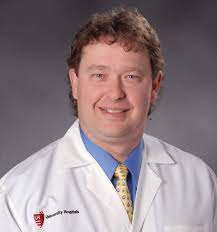
“To thrive, flourish, and reach their full potential, all children need the positive childhood experiences afforded by safe, stable and nurturing relationships.”
– Dr. Andrew Garner, MD, PhD, FAAP
What were the factors that led the AAP to revise the 2012 toxic stress report now?
In a decade, we have seen significant changes regarding the advances in basic developmental sciences. Toxic stress helps us to understand how adversity in childhood becomes biologically embedded and literally changes who we are at the molecular, cellular and behavioral levels and might alter life-course trajectories. With a social-isolating pandemic, our widening disparities, and our grappling with centuries of systemic racism, the concept of toxic stress has never been more relevant.
How should “toxic stress” be defined today?
Toxic stress refers to the body’s unrelenting response to significant adversity in the absence of safe, stable and nurturing relationships. There is a spectrum of adversities that might trigger such a physiologic response such as discrete life-threatening events, like experiencing abuse, violence in your neighborhood, or being bullied. On the other end, we have ongoing chronic conditions, like poverty or being exposed to racism or neglect. So, when we think about adversity we aren’t just thinking about trauma.
How does toxic stress affect the body?
When there is significant adversity in the absence of safe, stable and nurturing relationships, the prolonged or exaggerated stress response starts to change who we are at the molecular, cellular and behavioral levels. We begin to see changes when we look at the DNA-methylation patterns that help to turn genes on and off and at the cellular level when we look at the way the brain is wired and re-wired with experience, and at the behavioral level when we look at the behaviors that we use to adapt – for better or worse – to adversities.
How can resilience be built in children who face significant adversities early in their lives?
Adversity is not destiny. Having experienced significant adversity in childhood does not mean you are doomed to do poorly. The data tells us that even though we tend to think about adverse childhood experiences and positive childhood experiences being opposite ends of one spectrum, that’s probably not true. They are probably two completely different axes that in turn map into wellness in all of its forms – doing well academically, socially, physically, mentally and economically. Both adverse and positive childhood experiences co-exist in the lives of children every day. To thrive, flourish, and reach their full potential, all children need the positive childhood experiences afforded by safe, stable and nurturing relationships, especially those who are experiencing adversity.
How do other societal institutions that are part of the relational health framework mitigate toxic stress in children?
We are all talking about the same thing. Whether you are in healthcare, or you are a parent, or you are an early childhood educator or advocate, we all really want to get early brain development right. We all want healthy, resilient kids. But we are all trapped in our own silos and funding streams. These concepts have existed in many different fields of study for a long time – infant mental health, early child development, home visiting, etc.. I’m hopeful that the idea of safe, stable, and nurturing relationships as an antidote to childhood toxic stress is something we can all rally around.
